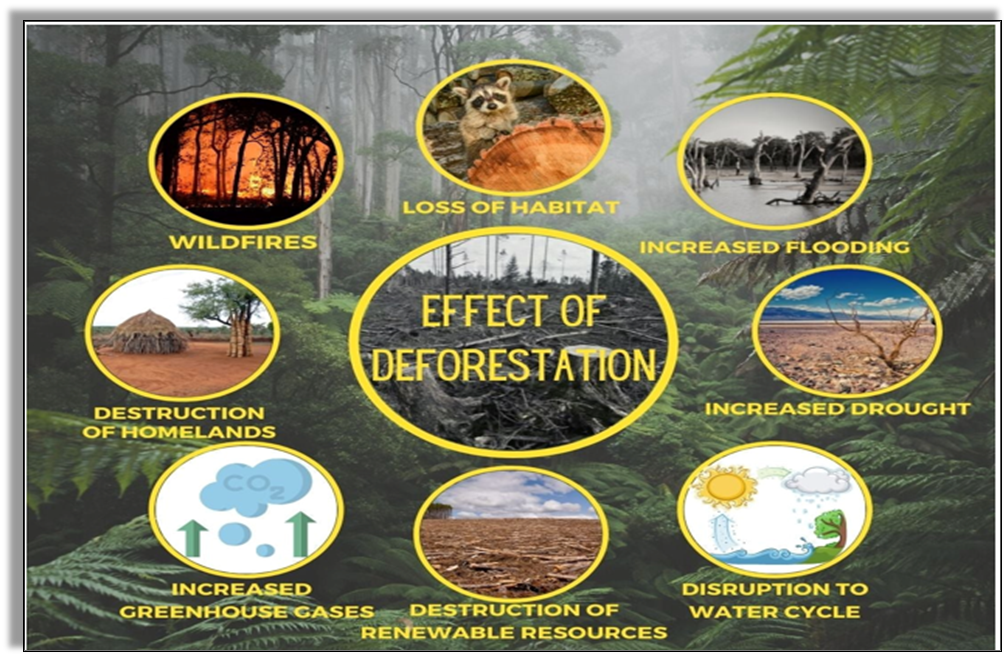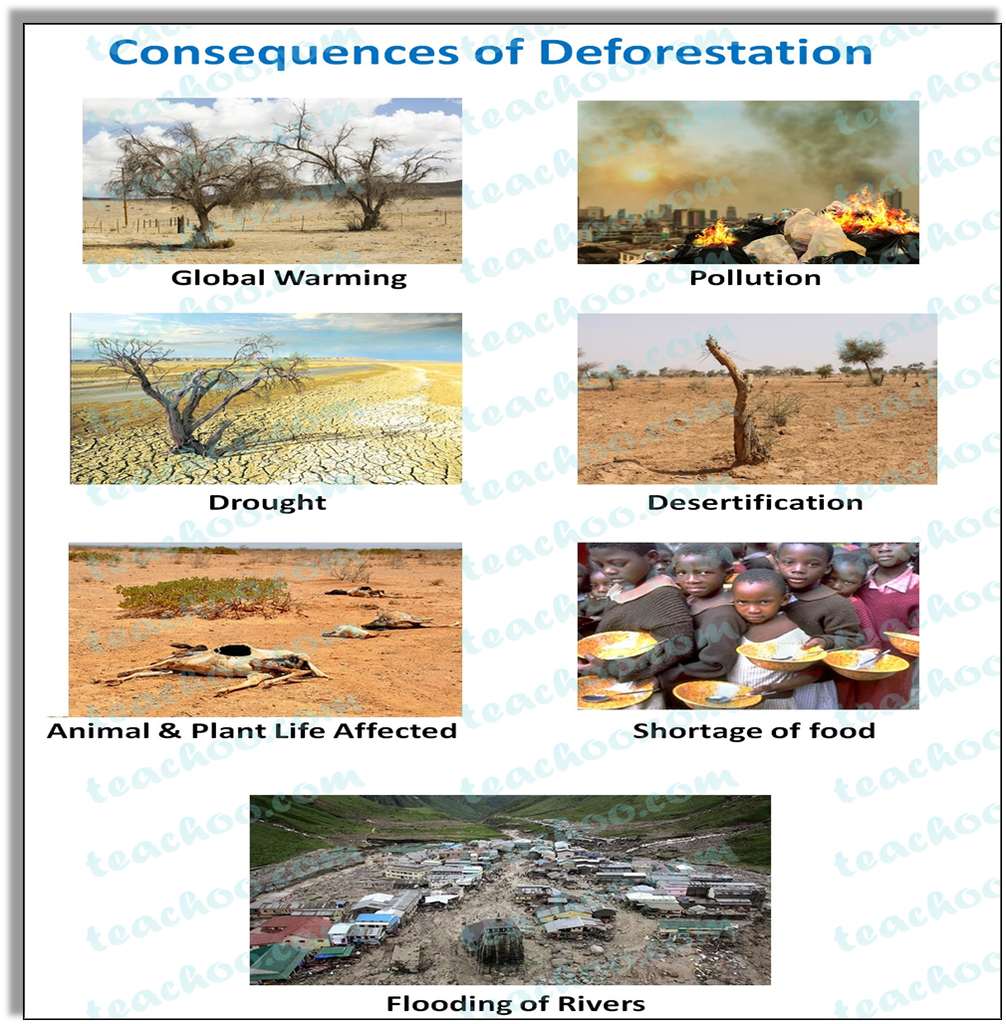- Books Name
- Class-8 Science Book
- Publication
- PathSet Publications
- Course
- CBSE Class 8
- Subject
- Science

Consequences of Deforestation

→ An increase in the level of carbon dioxide in the atmosphere leads to global warming.
→ Lowering of groundwater levels.
→ Increase in pollution level and temperature.
→ Decrease in the fertility of soil and amount of rainfall.
→ Increase in frequency of droughts and floods.
→ Desertification- conversion of fertile lands into deserts.
- This can lead to an increase in temperature and pollution levels on the earth.
- It increases the level of carbon dioxide in the atmosphere and the Groundwater level also gets lowered.
- If the cutting of trees continues, rainfall and the fertility of the soil will decrease.
- It will lead to increased chances of natural calamities such as floods and droughts.
- it can lead to global warming
- The increase in temperature on the earth disturbs the water cycle and may reduce rainfall. This could cause droughts.
- It leads to a change in soil properties.
- Fewer trees result in more soil erosion.
- Desertification: deforestation leads to soil erosion by removal of the top layer of the soil and by exposing the lower, hard and rocky layers. This soil becomes less fertile. Gradually the fertile land gets converted into deserts.
- Deforestation also leads to a decrease in the water holding capacity of the soil.
- The other properties of the soil like nutrient content, texture etc., also change because of deforestation.
Increase in Temperature and Global Warming
We know that Plants and trees consume carbon dioxide and give out oxygen during photosynthesis. If there are no trees, it will lead to more carbon dioxide in the atmosphere This Carbon Dioxide traps heat rays from the sun. This will lead to an increase in the temperature of the earth and can cause global warming.
Increase in Pollution
We know that carbon dioxide is generated by industries and vehicles. Plants and trees consume this carbon dioxide and help in reducing pollution. If we cut trees, it will increase carbon dioxide in the atmosphere.
Increase in Droughts
Removal of trees also disturbs the water cycle and causes droughts (less rainfall). The roots of trees suck water from the earth’s surface. This water goes to the leaves. Due to the sun, this water gets evaporated and goes to clouds. This later falls down as rain. If there are fewer trees, less water will go upbringing less rain.
Desertification
The roots of trees bind the soil together. Due to fewer trees, there will be more soil erosion (fertile soil is eroded by wind and water). Hence fertile lands will soon turn into deserts.
Animal and Plant Life is Affected
Animals and Birds are dependent on plants and trees for their food. The Natural Habitat (living area) of wild animals and plants is disturbed. In the case of deforestation, there will be fewer forests, so these plants and animals will become extinct (die because of a shortage of food).
Shortage of Food and Forest Produce
Trees and plants in the forest provide us variety of food to eat. Example- Fruits, honey etc. Also, wood obtained from trees is used to make furniture and paper etc. Many medicines are also prepared from plants and trees. So cutting trees will lead to a shortage of forest products.
Flooding of Rivers
During heavy rain, the roots of trees help the soil absorb water. However, in case of a shortage of trees, the soil will not be able to absorb water. This water will flow into rivers causing floods leading to loss of life and property.


 PathSet Publications
PathSet Publications
